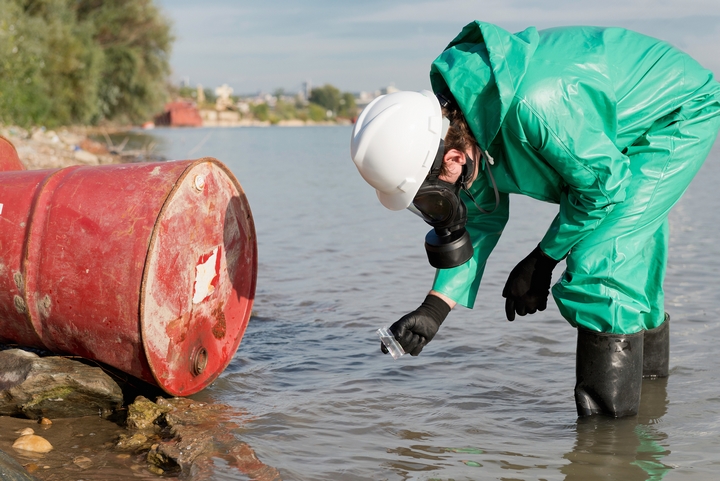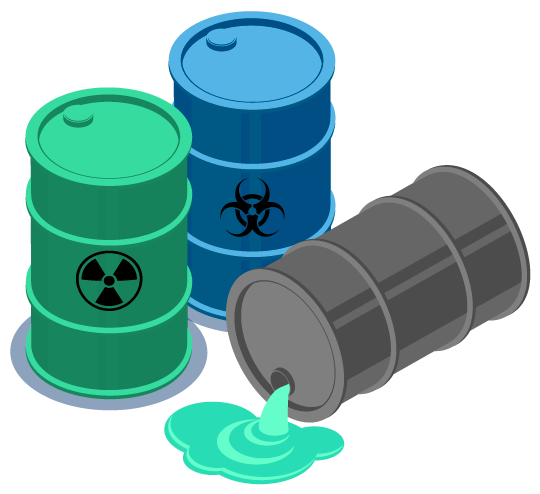Industrial Wastewater Treatment: Advanced Methods for Effective Monitoring
Industrial Wastewater Treatment: Advanced Methods for Effective Monitoring
Blog Article
How Fluid Garbage Disposal Functions: A Thorough Summary of Strategies and Technologies Employed

Introduction of Liquid Waste Types
The intricacy of fluid waste kinds requires a detailed understanding of their characteristics and ramifications for disposal. Liquid waste can extensively be classified right into numerous types, including industrial, metropolitan, farming, and contaminated materials. Each classification shows distinctive homes, needing certain management techniques to minimize ecological and health dangers.
Industrial liquid waste stems from manufacturing processes and often consists of an array of impurities, such as hefty steels, solvents, and natural compounds. Municipal liquid waste, mostly consisting of wastewater from households and business facilities, contains organic issue, nutrients, and pathogens (industrial wastewater treatment). Agricultural liquid waste, including overflow from farms, may consist of plant foods, chemicals, and animal waste, presenting dangers to water top quality and communities
Dangerous liquid waste is characterized by its toxicity, reactivity, or potential to trigger injury. This group consists of materials like acids, bases, and certain chemicals that demand strict handling and disposal protocols. Understanding these varied liquid waste types is vital for developing effective disposal approaches and making sure compliance with environmental laws. Appropriate category and characterization are important for implementing proper therapy methods and minimizing the negative influence on public health and the atmosphere.
Physical Therapy Approaches

Screening is the initial step, where larger bits and debris are gotten rid of from the liquid waste making use of displays or grates. This process safeguards downstream devices from damage and ensures smoother procedure. Following screening, sedimentation uses gravitational force to different solids from liquids. In sedimentation tanks, heavier particles resolve near the bottom, developing a sludge layer, while the cleared up fluid can be more dealt with.
Filtering is another essential method that includes passing the fluid via porous products, such as sand or membranes, to capture smaller sized bits. This action enhances the quality of the liquid, making it appropriate for succeeding therapy procedures.

Chemical Treatment Strategies
Chemical therapy techniques are important for properly taking care of liquid waste, especially in resolving dissolved and colloidal contaminants that physical techniques may not properly eliminate. These methods make use of different chemical representatives to neutralize, speed up, or transform unsafe compounds into much less hazardous kinds.
One common method is coagulation and flocculation, where chemicals such as alum or ferric chloride are included in promote the aggregation of suspended bits. This process enhances sedimentation, enabling easier elimination of the resulting sludge. In addition, oxidation processes, utilizing representatives like chlorine or ozone, are utilized to damage down intricate natural substances and pathogens, providing the waste more secure for discharge or further therapy.
Neutralization is another crucial method, which readjusts the pH of acidic or alkaline waste streams to neutral degrees, stopping possible damage to downstream systems and the atmosphere. Additionally, progressed oxidation procedures (AOPs) use mixes of oxidants and ultraviolet light to degrade persistent pollutants, attaining a greater degree of treatment effectiveness.
Organic Treatment Procedures
Biological treatment processes play a crucial role in the management of liquid waste by making use of microorganisms to decay raw material and lower contaminant degrees. These procedures can be extensively classified into anaerobic and cardiovascular therapies, each utilizing certain microbial communities to attain reliable waste deterioration.
Cardio therapy entails making use of oxygen to assist in the breakdown of organic materials by bacteria. This procedure is frequently executed in triggered sludge systems, where oygenation containers supply a helpful setting for microbial development, leading to the oxidation of natural contaminants. The resultant biomass can be divided from dealt with effluent via sedimentation.
In contrast, anaerobic treatment occurs in the lack of oxygen, depending on different microorganisms to break down organic issue. This approach is particularly helpful for high-strength waste, as it creates biogas, an eco-friendly energy source, while reducing sludge manufacturing. Technologies such as anaerobic digesters are regularly used in commercial and metropolitan applications.
Both cardiovascular and anaerobic biological therapies not just minimize the environmental influence of fluid waste however also promote resource healing, making them vital elements of sustainable waste monitoring methods. Their efficiency, versatility, and effectiveness sustain their widespread execution across different markets.
Emerging Technologies in Disposal
Cutting-edge approaches to liquid waste disposal are swiftly evolving, driven by developments in innovation and a raising emphasis on sustainability. Among these emerging technologies, membrane layer bioreactors (MBRs) have obtained traction for their capacity to incorporate organic therapy with membrane filtration, leading to top notch effluent that can be reused in different applications. MBRs enable smaller impacts and extra effective procedures contrasted to standard systems.
Another encouraging development is using anaerobic food digestion incorporated with nutrient healing technologies, which not only treats fluid waste yet likewise generates biogas and recovers valuable nutrients like nitrogen and phosphorus. This twin benefit improves resource efficiency and reduces ecological influence.
Additionally, advanced oxidation Read Full Report processes (AOPs) are being taken on for the deterioration of intricate natural toxins. These approaches utilize powerful oxidants and stimulants to break down impurities at the molecular degree, using a highly efficient solution for challenging waste streams.
Additionally, the combination of man-made intelligence and artificial intelligence in waste monitoring systems is enhancing functional performance and predictive upkeep, leading to minimized expenses and enhanced ecological conformity. These technologies reflect a click for more info substantial shift in the direction of more effective and sustainable fluid garbage disposal techniques.
Verdict
To conclude, reliable liquid waste disposal demands a comprehensive understanding of various methods and innovations. The integration of physical, chemical, and organic treatment methods ensures the efficient monitoring of diverse waste kinds. Additionally, the emergence of innovative technologies enhances treatment effectiveness and advertises sustainability in waste monitoring practices. By constantly advancing these methods, it becomes possible to resolve the growing difficulties related to liquid waste, inevitably adding to environmental management and resource recovery.
Liquid waste disposal is a critical aspect of ecological management, requiring an extensive understanding of numerous methods and innovations customized to various waste types. Liquid waste can broadly be classified into numerous kinds, consisting of commercial, municipal, farming, and harmful waste. Agricultural liquid waste, consisting of drainage from ranches, may have fertilizers, pesticides, and pet waste, posing dangers to water top quality and ecological communities.
Different physical therapy methods play an important role in taking care of liquid waste properly - industrial wastewater treatment.In conclusion, reliable liquid waste disposal requires an extensive understanding of numerous techniques and modern Recommended Site technologies
Report this page